I Cannot See You—The Perspectives of Deaf Students to Online Learning during COVID-19 Pandemic: Saudi Arabia Case Study
Abstract
:1. Introduction
- RQ1: What are the challenges and concerns that deaf and hard-of-hearing students are having with an online education during COVID-19 pandemic?
- To explore the challenges faced by deaf students during the pandemic.
- To identify how issues faced by deaf students during the COVID-19 pandemic can be solved.
2. Background
2.1. Case Study Selected
2.2. Deaf Education in TVTC
2.3. Pre-Pandemic Learning Process
- Students did not have experiences on how to use the full functionality of Blackboard, except to review course materials [24].
- Students used to give their homework and projects as hand-outs or using Dropbox to submit them. For project courses, student used to email teachers about any updates and the final submission of the course delivery.
- Students used Rayat (a portal enables students/trainees to obtain many services such as the tracking training record and the attendance and grades, etc.) [25] to access their grades, personal information, and their process of attending their courses.
2.4. Learning Management Systems (LMSs)
3. Related Work
3.1. Deaf Students during COVID-19 Studies
3.2. E-Learning System for Deaf Students
3.3. Deaf Students in Online Learning
| Study | Year | Purpose | Method | Source of Info | Participants | Sample Size | Study Location |
|---|---|---|---|---|---|---|---|
| Long et al. [41] | 2007 | Understanding student perceptions of communication in | Survey | NTID | Students | 908 | United States |
| blended learning courses | |||||||
| Investigating successes and challenges in offering | |||||||
| Slike et al. [42] | 2008 | online courses in a “virtual classroom” format to deaf | Online Synchronous | University of | Students | 26 | United States |
| hard of hearing | Tool | Pennsylvania | |||||
| Yoon and Kim [43] | 2011 | Capturing the effects of captions on deaf students’ content | Comprehension test | Korean Nazarene | Students | 62 | Korean |
| comprehension, cognitive load, and motivation in online learning | & survey | University | |||||
| Burgstahler [44] | 2015 | Identifying online learning practices make social inclusion | Literature review | N/A | N/A | N/A | N/A |
| possible for individuals with disabilities | |||||||
| Alcazar et al. [38] | 2016 | Creating a supplementary English elearning system made | Survey | Philippine Institute | Students, | N/A | Philippines |
| for the Deaf | of the Deaf | Teachers | |||||
| McKeown [45] | 2019 | Proposing a model which describes the three barriers deaf | Literature review | N/A | N/A | N/A | N/A |
| students might encounter in an online learning situation | |||||||
| Batanero et al. [39] | 2019 | Testing a redesign of the Moodle platform on deaf and | Empirical study | Moodle platform | Students | 23 | N/A |
| deaf-blind students | |||||||
| Exploring current trends in online higher education, data on | |||||||
| Counselman et al. [46] | 2020 | the experience of Deaf/deaf/Hard of Hearing students and | Literature review | N/A | N/A | N/A | N/A |
| current options for improving inclusively in the online classroom | |||||||
| Fernandes et al. [33] | 2020 | Examining how the education of voters for deaf people | Interview | GERKATIN | Students | 33 | Indonesia |
| Lynn et al. [34] | 2020 | Identifying Successes and challenges in teaching chemistry | Author’s insights | NTID | N/A | N/A | United States |
| Tomasuolo et al. [37] | 2020 | Exploring the impacts of the recent pandemic crisis | Exploratory research | Literature review | N/A | N/A | Italy |
| Smith and Colton [30] | 2020 | Developing a YouTube channel that focuses on providing | Literature review | Author’s experience | N/A | N/A | United States |
| Alsadoon and Turkestani [4] | 2020 | Identifying the lecturers’ obstacles during virtual classroom | Interview | King Saud University | lecturers | 11 | Saudi Arabia |
| Kritzer and Smith [29] | 2020 | Recommending parents about educating DHH children | Survey | United States | Parents | 133 | United States |
| Swanwick et al. [35] | 2020 | Investigating the impact on deaf adults, children and their | Interview | Ghana | Teachers, leaders, | 6 | Ghana |
| families, focusing on issues of inclusion | Students | ||||||
| Lazzari and Baroni [32] | 2020 | Presenting the remote teaching experience | Survey | Scuola Audiofonetica | Students | 233 | Italy |
| Paatsch and Toe [36] | 2020 | Investigating pragmatic skills among deaf children | Literature review | Existing evidence | N/A | N/A | Australia |
| Krishnan et al. [51] | 2020 | Identify the Challenges Faced by hearing impairment | Survey | MySkill Foundation | Students | 10 | Malaysia |
| Halley Sutton [31] | 2020 | Suggesting best practices if courses shift to online learning | Literature review | Existing evidence | N/A | N/A | United States |
| Kylie Sommer [52] | 2020 | Identify the Effect on deaf and hard of hearing | Survey | Lee University | Students | 36 | United States |
| Mantzikos and Lappa [53] | 2020 | Analyzing the difficulties and barriers individuals deaf | Literature review | Existing evidence | N/A | N/A | Greece |
| Mohammed [47] | 2021 | Investigating how an emergent system of e-learning that started | Interview | Primary school | Students, teachers, | N/A | Trinidad and |
| during crisis conditions affects the linguistic access of deaf students | & secondary school | interpreters, parents | Tobago | ||||
| Batanero-Ocha et al. [40] | 2021 | Analyzing the difficulties and barriers individuals deaf | Empirical study | Moodle platform | Students | 23 | N/A |
| Musyoka and Smith [48] | 2021 | Identifying language barriers and academic performance when | Literature review | Existing evidence | N/A | N/A | United States |
| discussing mainstreamed D/HH students’ online teaching | |||||||
| Long et al. [49] | 2021 | Understanding the factors contributing to the academic achievement | Survey | RIT | Students | 88 | United States |
| and the interaction of students in online learning | |||||||
| Caupayan and Pogoy [50] | 2021 | examining and interpreting the lived experiences of 14 purposively | Interview | La Salle University | Students | 14 | Philippines |
| selected deaf students who chose online modality for their education | |||||||
| This work | 2021 | Investigating the challenging and concerns of deaf students | Interview & Survey | TVTC | Students | 65 | Saudi Arabia |
3.4. Accessibility with Deaf Students Studies
4. Materials and Methods
4.1. Study Approach
4.2. Data Collection
4.3. Interviews
4.3.1. Protocol
4.3.2. Participants
4.3.3. Data Analysis
4.3.4. Transcript Coding
4.3.5. Deducing Themes
4.4. Survey
4.4.1. Design
4.4.2. Participants
4.4.3. Data Analysis
4.4.4. Privacy and Data Protection
4.4.5. Rationale behind the Interview and Survey Questions
5. Study Results
- RQ1: What are the challenges and concerns that deaf and hard-of-hearing students are having with an online education during COVID-19 pandemic?
“at first, using Blackboard was extremely difficult and causing problems for getting course material and navigating the platform. Furthermore, there were different opinions because the department encourages us to use Blackboard, whereas the teachers encourage us to use different sites, so sharing class materials were very hard between the teacher and students. We ended up using social media application ‘WhatsApp’ to share the class materials.”
“Blackboard was not friendly interface. I had an issue locating the exam component since there are a lot of headers and sub-headers in the navigation bar, and the font was very small hard to read.”
“Blackboard was in English interface, and it was hard for me to switch it to the Arabic language without any assistance. I missed many classes for this reason, and teachers were not recording the classes.”
“Less than half of the materials were covered because the time was short, and we faced difficulties understanding the material. It has to be recorded for us to see it again, but there was nothing recorded.”
“Zoom and google meet. Google meet was the best because all cameras were visible to us, whereas in Blackboard, we can only see four cameras.”
“Communicate was my biggest issue, and there were difficulties in communicating with our teachers and the department. Some teachers take a while to respond, where others not responded at all.”
“The teacher would call the student and sometimes presses on the name of the student or calls their name or waive at the student but in this case, the student cannot see, because the picture would be apparent only to the teacher but from the student view it was only visible for four students’ camera, not all the class. So, the teacher would waive, but the student did not know because of the other four students, so it is always very late for the student to ask, and the teacher would answer: hold on, let me see which student needs me so I can show their camera.”
“When the screen freezes, I take a picture and send it to the teachers via WhatsApp, and tell them I cannot log in.”
“We do not have an interpreter during COVID-19 as we used before the pandemic. The teacher should have a strong sign language for us to understand them. That is the most crucial thing the deaf needs in learning. The problem we encounter that some teachers sign language is weak. So as a deaf student, if the sign languages were inadequate, there isn’t any benefit because the information isn’t received correctly and isn’t fair.”
“Teachers were very close to the device, and I will not be able to see their hands and signs.”
“Many times, we login into the correct lectures, but we cannot find the teacher.”
“When I encounter problems with the laptop, I switch to access the class through the phone because the internet signal was stronger on my phone than the laptop. When a teacher sends a file during the class, it was not easy to see it through a phone, so I switched back to the laptop. Then, I still struggle to get the file due to the weak internet signal.”
“It was difficult to manage time at home, and I was anxious. I remember that there were problems between my dad and me, where he kept asking me to do stuff at home while I was trying to study for college. Another issue is that many children were playing around, so half of the time focused on lectures where the other half was being busy with family.”
6. Study Discussion
- Takeaway 1: E-learning limitation. We found that the inadequacy of tools with limited cameras that can be visible to teachers and students posed great challenges to deaf education. The tools do not provide subtitles, and for Zoom, they provide a caption for the stream class, without supporting languages, such as Arabic. Such a finding greatly affected deaf students’ learning because they cannot hear what is being said but depend on what they see on the screens. The importance of visual media in education is also indicated by Fernandes et al. [33] in Indonesia, who found that the effective use of videos greatly promoted education. Improvement of such aspects could greatly help in improving deaf education. Future researchers can compare the effectiveness of various e-learning tools to suggest which are more appropriate for deaf students.
- Takeaway 2: Lack of experience. It was clear that teachers and students are not trained on the tools or do not even have good documentation to follow. Without such training, there were problems in how both students and teachers used the technology, leading to challenges in education. For deaf students, in particular, have not been trained to use the special tools needed to facilitate their education. Such findings corroborate a similar study by Krishnan et al. [51] in Malaysia that demonstrated issues in e-learning due to a lack of familiarity with technology. Other scholars can investigate the range of training programs, methods, and guidelines that would be useful in enlightening the population on how to undertake online education effectively.
- Takeaway 3: Improve the accessibility and usage of learning materials. We noted that there were significant problems in accessibility and usage of learning materials due to reasons such as a lack of subtitles and captions on videos. The importance of improving accessibility for deaf students is confirmed by studies such as Sommer [52] in the US and Mantzikos and Lappa [53] in Greece. It is important to state that deaf students need such assistance in order to understand the content in videos. More research is needed on these accessibility issues in distance/remote education for deaf students to minimize access challenges in similar contexts.
- Takeaway 4: Simplify LMS systems. Our findings showed that most students were facing problems navigating through the LMS systems, blackboard in particular. For instance, they did not know how to change languages, switch between content, obtain course materials, among others. The problem is worse for deaf students, who cannot follow audio directions on the systems. Such technical issues were also identified by Alsadoon and Turkestani [4] as significant barriers to e-learning for deaf students. It will be important for software engineers to investigate how LMS systems can be simplified for deaf students.
- Takeaway 5: Provide necessary equipment and technology. We established that a lot of equipment was needed for students to communicate with their teachers and access materials from the online platforms. For instance, it is important for students to have computers, fast internet access, among other things. The need to provide such tools and technologies was emphasized in a previous study by Krishnan et al. [51]. It will be important to identify how such software and devices can be availed to students.
7. Limitations and Future Work
8. Conclusions
Author Contributions
Funding
Institutional Review Board Statement
Informed Consent Statement
Data Availability Statement
Acknowledgments
Conflicts of Interest
References
- Gleason, C.; Valencia, S.; Kirabo, L.; Wu, J.; Guo, A.; Jeanne Carter, E.; Bigham, J.; Bennett, C.; Pavel, A. Disability and the COVID-19 Pandemic: Using Twitter to Understand Accessibility during Rapid Societal Transition. In Proceedings of the 22nd International ACM SIGACCESS Conference on Computers and Accessibility, Virtual Event, 18–22 October 2020; pp. 1–14. [Google Scholar]
- Hanjarwati, A.; Suprihatiningrum, J. Is Online Learning Accessible During COVID-19 Pandemic? Voices and Experiences of UIN Sunan Kalijaga Students with Disabilities. Nadwa 2020, 14, 1–38. [Google Scholar]
- UNESCO. Including Learners with Disabilities in COVID-19 Education Responses. 2020. Available online: https://en.unesco.org/news/including-learners-disabilities-covid-19-education-responses (accessed on 6 August 2021).
- Alsadoon, E.; Turkestani, M. Virtual Classrooms for Hearing-impaired Students during the COVID-19 Pandemic. Rom. J. Multidimens. Educ. Rom. Pentru Educ. Multidimens. 2020, 12, 1–8. [Google Scholar]
- Walabe, E. E-Learning Delivery in Saudi Arabian Universities. Ph.D. Thesis, Université d’Ottawa/University of Ottawa, Ottawa, ON, Canada, 2020. [Google Scholar]
- Alahmari, A. The state of distance education in Saudi Arabia. Q. Rev. Distance Educ. 2017, 18, 91–98. [Google Scholar]
- Smith, E.E. 3 Things to Consider When Designing Remote Teaching. Mt. R. Univ. 2020. [Google Scholar] [CrossRef]
- Yezli, S.; Khan, A. COVID-19 social distancing in the Kingdom of Saudi Arabia: Bold measures in the face of political, economic, social and religious challenges. Travel Med. Infect. Dis. 2020, 37, 101692. [Google Scholar] [CrossRef] [PubMed]
- Rajab, M.H.; Gazal, A.M.; Alkattan, K. Challenges to online medical education during the COVID-19 pandemic. Cureus 2020, 12, e8966. [Google Scholar] [CrossRef] [PubMed]
- AlHumaid, J.; Ali, S.; Farooq, I. The psychological effects of the COVID-19 pandemic and coping with them in Saudi Arabia. Psychol. Trauma Theory Res. Pract. Policy 2020, 12, 505. [Google Scholar] [CrossRef]
- Ebrahim, S.H.; Memish, Z.A. Saudi Arabia’s drastic measures to curb the COVID-19 outbreak: Temporary suspension of the Umrah pilgrimage. J. Travel Med. 2020, 27, taaa029. [Google Scholar] [CrossRef] [Green Version]
- Almekhlafy, S.S.A. Online learning of English language courses via blackboard at Saudi universities in the era of COVID-19: Perception and use. PSU Res. Rev. 2020, 5, 16–32. [Google Scholar] [CrossRef]
- Fatani, T.H. Student satisfaction with videoconferencing teaching quality during the COVID-19 pandemic. BMC Med Educ. 2020, 20, 1–8. [Google Scholar] [CrossRef]
- Alshehri, Y.A.; Mordhah, N.; Alsibiani, S.; Alsobhi, S.; Alnazzawi, N. How the regular teaching converted to fully online teaching in saudi arabia during the coronavirus covid-19. Creat. Educ. 2020, 11, 985–996. [Google Scholar] [CrossRef]
- Alqurshi, A. Investigating the impact of COVID-19 lockdown on pharmaceutical education in Saudi Arabia–A call for a remote teaching contingency strategy. Saudi Pharm. J. 2020, 28, 1075–1083. [Google Scholar] [CrossRef]
- Madhesh, A. Full exclusion during COVID-19: Saudi Deaf education is an example. Heliyon 2021, 7, e06536. [Google Scholar] [CrossRef] [PubMed]
- Alofi, A.S.; Clark, M.D.; Marchut, A.E. Life stories of Saudi deaf individuals. Psychology 2019, 10, 1506. [Google Scholar] [CrossRef] [Green Version]
- Al-shammari, M.; Ashankyty, A.; Al-Mowina, N.; Al-Mutairy, N.; Al-shammari, L.; Amin, S. Social-emotional perceptions of deaf students in Hail, Saudi Arabia. Am. J. Educ. Res. 2014, 2, 304–315. [Google Scholar] [CrossRef] [Green Version]
- UNESCO-UNEVOC. Technical and Vocational Training Corporation. 2020. Available online: https://unevoc.unesco.org/home/Explore+the+UNEVOC+Network/centre=300 (accessed on 14 August 2021).
- Özokcu, O.; Yildirim, T. Determining the Fears of Student with Special Needs in Inclusive Environments. Int. Educ. Stud. 2018, 11, 174–182. [Google Scholar] [CrossRef]
- Şahin, M. Blended Learning Environment in Vocational Education. In Proceedings of the 5th International Conference on Virtual Learning (ICVL), Targu Mure, Romania, 29–31 October 2010; pp. 244–254. [Google Scholar]
- Alebaikan, R. A blended learning framework for Saudi higher education. In Proceedings of the Second International Conference of E-Learning and Distance Learning, Riyadh, Saudi Arabia, 18–20 February 2011. [Google Scholar]
- Alaidarous, K.; Madini, A.A. Exploring EFL students’ perception in blended learning environment in Saudi technical education context. Int. J. Educ. Investig. 2016, 3, 69–81. [Google Scholar]
- Technical and Vocational Training Corporation Learning Center, E-Training. Technical and Vocational Training Corporation. 2021. Available online: http://elearning.edu.sa/ (accessed on 14 August 2021).
- TVTC. Rayat. 2021. Available online: https://www.tvtc.gov.sa/rayat.html (accessed on 14 March 2021).
- Aldiab, A.; Chowdhury, H.; Kootsookos, A.; Alam, F.; Allhibi, H. Utilization of Learning Management Systems (LMSs) in higher education system: A case review for Saudi Arabia. Energy Procedia 2019, 160, 731–737. [Google Scholar] [CrossRef]
- Ali, J.K.M. Blackboard as a motivator for Saudi EFL students: A psycholinguistic study. Int. J. Engl. Linguist. 2017, 7, 144–151. [Google Scholar] [CrossRef] [Green Version]
- Alturki, U.T.; Aldraiweesh, A. Evaluating the usability and accessibility of LMS “Blackboard” at King Saud University. Contemp. Issues Educ. Res. CIER 2016, 9, 33–44. [Google Scholar] [CrossRef]
- Kritzer, K.L.; Smith, C.E. Educating deaf and hard-of-hearing students during COVID-19: What parents need to know. Hearing J. 2020, 73, 32. [Google Scholar] [CrossRef]
- Smith, C.; Colton, S. Creating a YouTube Channel to equip parents and teachers of students who are deaf. J. Technol. Teach. Educ. 2020, 28, 453–461. [Google Scholar]
- Sutton, H. Guide offers best practices for meeting the needs of deaf students during COVID-19 pandemic. Disabil. Compliance High. Educ. 2020, 26, 9. [Google Scholar] [CrossRef]
- Lazzari, M.; Baroni, F. Remote teaching for deaf pupils during the Covid-19 emergency. In Proceedings of the 14th International Conference on e-Learning 2020, Lisbon, Portugal, 15–17 December 2020; pp. 170–174. [Google Scholar]
- Fernandes, R.; Susilawati, N.; Muspita, R.; Putra, E.V.; Amri, E.; Akbar, A.; Putra, A. Voter Education for The Deaf During The Covid–19 Pandemic. PalArch’s J. Archaeol. Egypt/Egyptol. 2020, 17, 10518–10528. [Google Scholar]
- Lynn, M.A.; Templeton, D.C.; Ross, A.D.; Gehret, A.U.; Bida, M.; Sanger, T.J.; Pagano, T. Successes and challenges in teaching chemistry to deaf and hard-of-hearing students in the time of COVID-19. J. Chem. Educ. 2020, 97, 3322–3326. [Google Scholar] [CrossRef]
- Swanwick, R.; Oppong, A.M.; Offei, Y.N.; Fobi, D.; Appau, O.; Fobi, J.; Frempomaa Mantey, F. The impact of the COVID-19 pandemic on deaf adults, children and their families in Ghana. J. Br. Acad. 2020, 8, 141–165. [Google Scholar] [CrossRef]
- Paatsch, L.; Toe, D. The impact of pragmatic delays for deaf and hard of hearing students in mainstream classrooms. Pediatrics 2020, 146, S292–S297. [Google Scholar] [CrossRef] [PubMed]
- Tomasuolo, E.; Gulli, T.; Volterra, V.; Fontana, S. The Italian Deaf community at the time of Coronavirus. Front. Sociol. 2021, 5, 125. [Google Scholar] [CrossRef] [PubMed]
- Alcazar, V.J.L.L.; Maulana, A.N.M.; Mortega, R.O.; Samonte, M.J.C. Speech-to-visual approach e-learning system for the deaf. In Proceedings of the 2016 11th International Conference on Computer Science & Education (ICCSE), Nagoya, Japan, 23–25 August 2016; pp. 239–243. [Google Scholar]
- Batanero, C.; de Marcos, L.; Holvikivi, J.; Hilera, J.R.; Otón, S. Effects of new supportive technologies for blind and deaf engineering students in online learning. IEEE Trans. Educ. 2019, 62, 270–277. [Google Scholar] [CrossRef]
- Batanero-Ochaíta, C.; De-Marcos, L.; Rivera, L.F.; Holvikivi, J.; Hilera, J.R.; Tortosa, S.O. Improving Accessibility in Online Education: Comparative Analysis of Attitudes of Blind and Deaf Students Toward an Adapted Learning Platform. IEEE Access 2021, 9, 99968–99982. [Google Scholar] [CrossRef]
- Long, G.L.; Vignare, K.; Rappold, R.P.; Mallory, J. Access to communication for deaf, hard-of-hearing and ESL students in blended learning courses. Int. Rev. Res. Open Distrib. Learn. 2007, 8, 1–13. [Google Scholar] [CrossRef] [Green Version]
- Slike, S.B.; Berman, P.D.; Kline, T.; Rebilas, K.; Bosch, E. Providing online course opportunities for learners who are deaf, hard of hearing, or hearing. Am. Ann. Deaf. 2008, 153, 304–308. [Google Scholar] [CrossRef]
- Yoon, J.O.; Kim, M. The effects of captions on deaf students’ content comprehension, cognitive load, and motivation in online learning. Am. Ann. Deaf. 2011, 156, 283–289. [Google Scholar] [CrossRef]
- Burgstahler, S. Opening doors or slamming them shut? Online learning practices and students with disabilities. Soc. Incl. 2015, 3, 69–79. [Google Scholar] [CrossRef]
- McKeown, C.; McKeown, J. Accessibility in online courses: Understanding the deaf learner. TechTrends 2019, 63, 506–513. [Google Scholar] [CrossRef]
- Counselman Carpenter, E.A.; Meltzer, A.; Marquart, M. Best Practices for Inclusivity of Deaf/deaf/Hard of Hearing Students in the Synchronous Online Classroom. World J. Educ. 2020, 10, 26–34. [Google Scholar] [CrossRef]
- Mohammed, N.u.d. Deaf students’ linguistic access in online education: The case of Trinidad. Deaf. Educ. Int. 2021, 23, 217–233. [Google Scholar] [CrossRef]
- Musyoka, M.M.; Smith, Z.Y. Mainstreamed Deaf/HH Students’ Online Learning in K-12: Challenges, Opportunities, and Solutions. In Curriculum Development and Online Instruction for the 21st Century; IGI Global: Hershey, PA, USA, 2021; pp. 69–89. [Google Scholar]
- Long, G.L.; Marchetti, C.; Fasse, R. The importance of interaction for academic success in online courses with hearing, deaf, and hard-of-hearing students. Int. Rev. Res. Open Distrib. Learn. 2011, 12, 1–19. [Google Scholar] [CrossRef]
- Caupayan, J.; Pogoy, A. Unheard Stories of Deaf Students in Online Learning: A Phenomenological Study. 2021. Available online: https://papers.ssrn.com/sol3/papers.cfm?abstract_id=3856136 (accessed on 14 August 2021).
- Krishnan, I.A.; De Mello, G.; Kok, S.A.; Sabapathy, S.K.; Munian, S.; Ching, H.S.; Kandasamy, P.; Ramalingam, S.; Baskaran, S.; Kanan, V.N. Challenges Faced by Hearing Impairment Students During COVID-19. Malays. J. Soc. Sci. Humanit. MJSSH 2020, 5, 106–116. [Google Scholar] [CrossRef]
- Sommer, K. The Effect of COVID-19 on Deaf and Hard of Hearing College Students. In 4 Kevin Ung, Director of McNair Scholar’s Program; Lee University: Cleveland, TN, USA, 2020; Volume 3, p. 312. [Google Scholar]
- Mantzikos, C.N.; Lappa, C.S. Difficulties and Barriers in the Education of Deaf and Hard of Hearing Individuals in the ERA of COVID-19: The Case of Greece-A Viewpoint Article. Eur. J. Spec. Educ. Res. 2020, 6, 75–95. [Google Scholar] [CrossRef]
- Benbasat, I.; Goldstein, D.K.; Mead, M. The case research strategy in studies of information systems. MIS Q. 1987, 11, 369–386. [Google Scholar] [CrossRef]
- Zainal, Z. Case study as a research method. Jurnal Kemanusiaan 2007, 5, 1. [Google Scholar]
- Goodenough, A.; Waite, S. Real World Research: A resource for Users of Social Research Methods in Applied Settings; John Wiley & Sons Ltd.: New York, NY, USA, 2011; 586p. [Google Scholar] [CrossRef]
- Runeson, P.; Höst, M. Guidelines for conducting and reporting case study research in software engineering. Empir. Softw. Eng. 2009, 14, 131–164. [Google Scholar] [CrossRef] [Green Version]
- Kitchenham, B.A.; Pfleeger, S.L. Principles of survey research part 2: Designing a survey. ACM SIGSOFT Softw. Eng. Notes 2002, 27, 18–20. [Google Scholar] [CrossRef]
- Boyatzis, R.E. Transforming Qualitative Information: Thematic Analysis and Code Development; Sage: Newcastle upon Tyne, UK, 1998. [Google Scholar]
- Roulston, K. Data analysis and ‘theorizing as ideology’. Qual. Res. 2001, 1, 279–302. [Google Scholar] [CrossRef]
- Braun, V.; Clarke, V. Using thematic analysis in psychology. Qual. Res. Psychol. 2006, 3, 77–101. [Google Scholar] [CrossRef] [Green Version]
- Cleminson, J. A thematic analysis of a photo elicitation investigating ‘what does it mean to a person to be deaf or hard of hearing?’. J. Appl. Psychol. Soc. Sci. 2019, 5, 1–30. [Google Scholar]
- Berke, L.; Seita, M.; Huenerfauth, M. Deaf and hard-of-hearing users’ prioritization of genres of online video content requiring accurate captions. In Proceedings of the 17th International Web for All Conference, Taipei, Taiwan, 20–21 April 2020; pp. 1–12. [Google Scholar]
- Nowell, L.S.; Norris, J.M.; White, D.E.; Moules, N.J. Thematic analysis: Striving to meet the trustworthiness criteria. Int. J. Qual. Methods 2017, 16, 1609406917733847. [Google Scholar] [CrossRef]
- Vaismoradi, M.; Turunen, H.; Bondas, T. Content analysis and thematic analysis: Implications for conducting a qualitative descriptive study. Nurs. Health Sci. 2013, 15, 398–405. [Google Scholar] [CrossRef] [PubMed]
- Brenner, M.E. Interviewing in educational research. In Handbook of Complementary Methods in Education Research, 3rd ed.; Routledge: London, UK, 2006; Volume 2, ISBN 9780203874769. [Google Scholar]
- Hussein, A. The use of triangulation in social sciences research: Can qualitative and quantitative methods be combined. J. Comp. Soc. Work. 2009, 1, 1–12. [Google Scholar]
- Murairwa, S. Voluntary sampling design. Int. J. Adv. Res. Manag. Soc. Sci. 2015, 4, 185–200. [Google Scholar]
- N. Alshenaifi, R.; Feng, J.H. Investigating the Use of Social Media in Supporting Children with Cognitive Disabilities and Their Caregivers from Saudi Arabia. In Proceedings of the 22nd International ACM SIGACCESS Conference on Computers and Accessibility, Athens, Greece, 26–28 October 2020; pp. 1–4. [Google Scholar]
- Survey Questions. 2021. Available online: https://zenodo.org/record/5638412 (accessed on 2 November 2021).
- Smith, E.; Loftin, R.; Murphy-Hill, E.; Bird, C.; Zimmermann, T. Improving developer participation rates in surveys. In Proceedings of the 2013 6th International Workshop on Cooperative and Human Aspects of Software Engineering (CHASE), San Francisco, CA, USA, 25 May 2013; pp. 89–92. [Google Scholar]

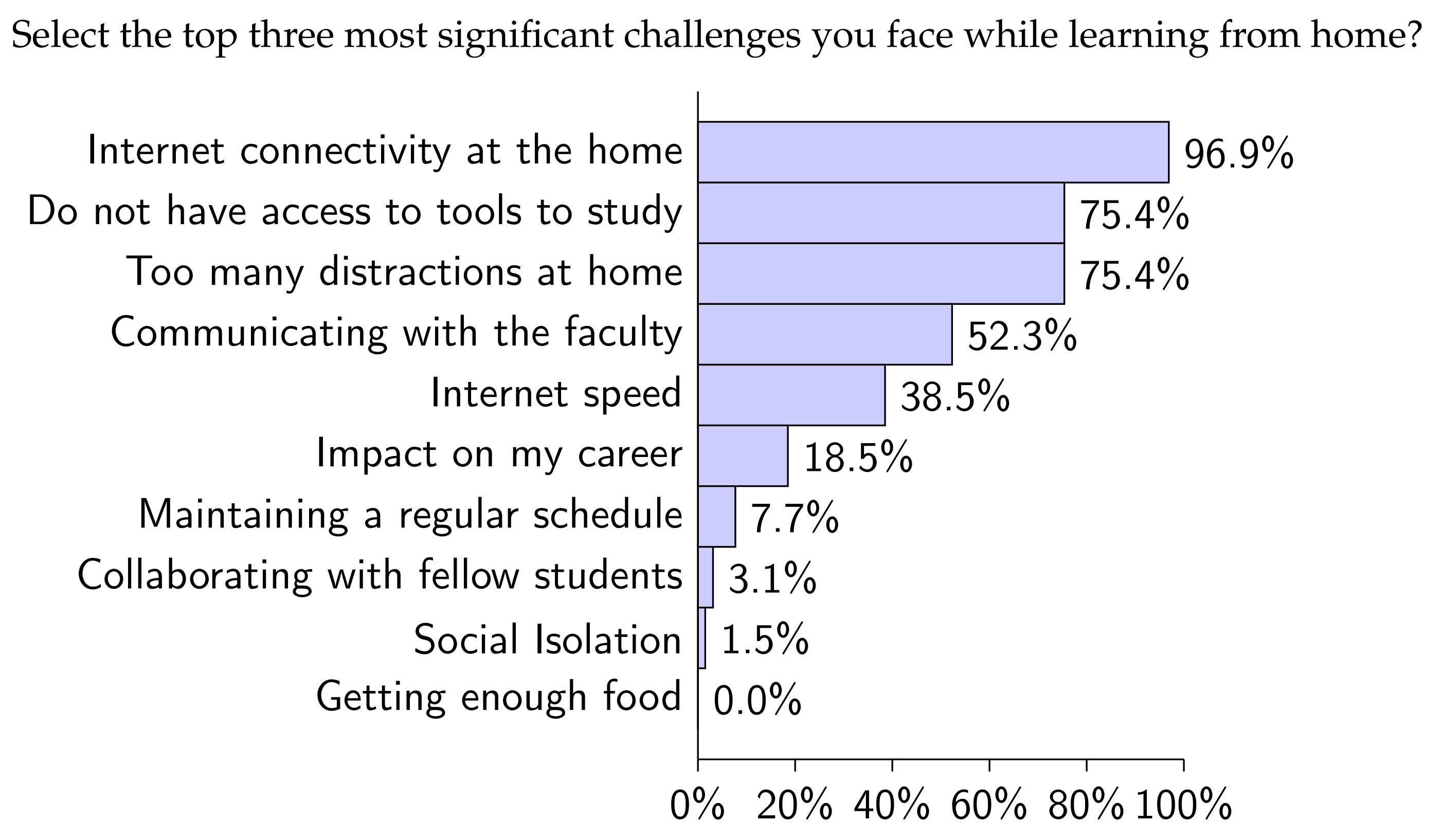
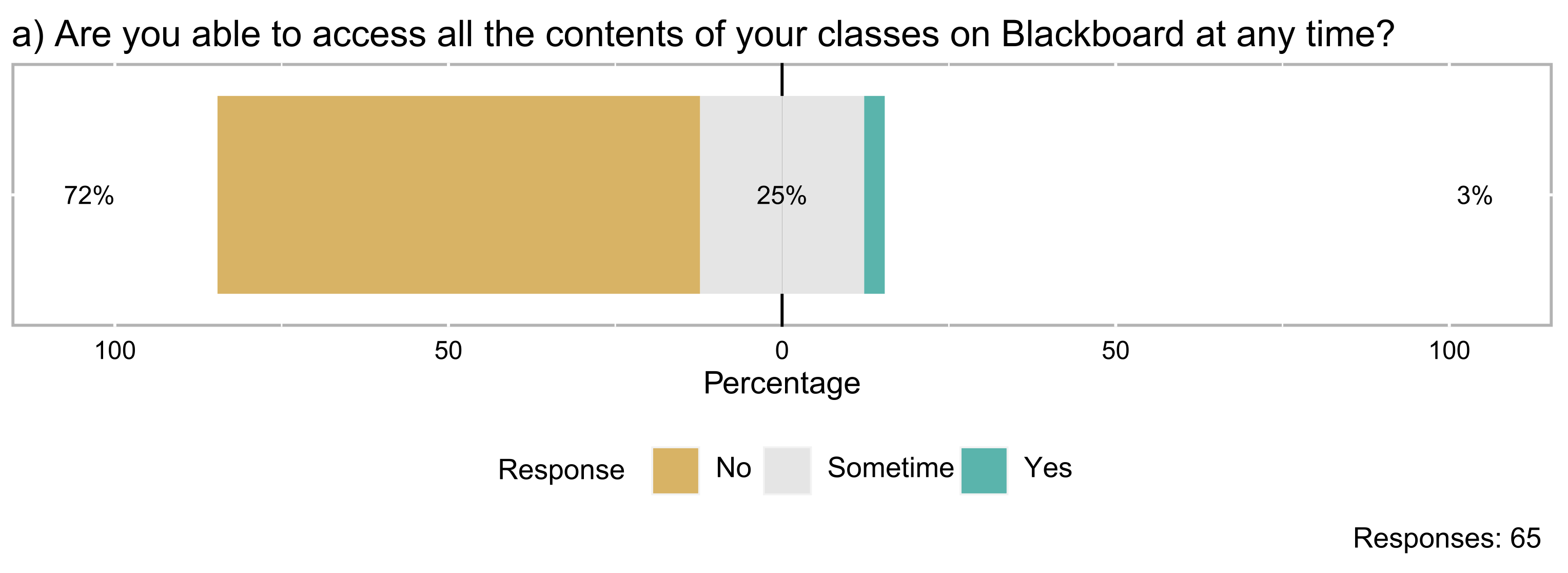



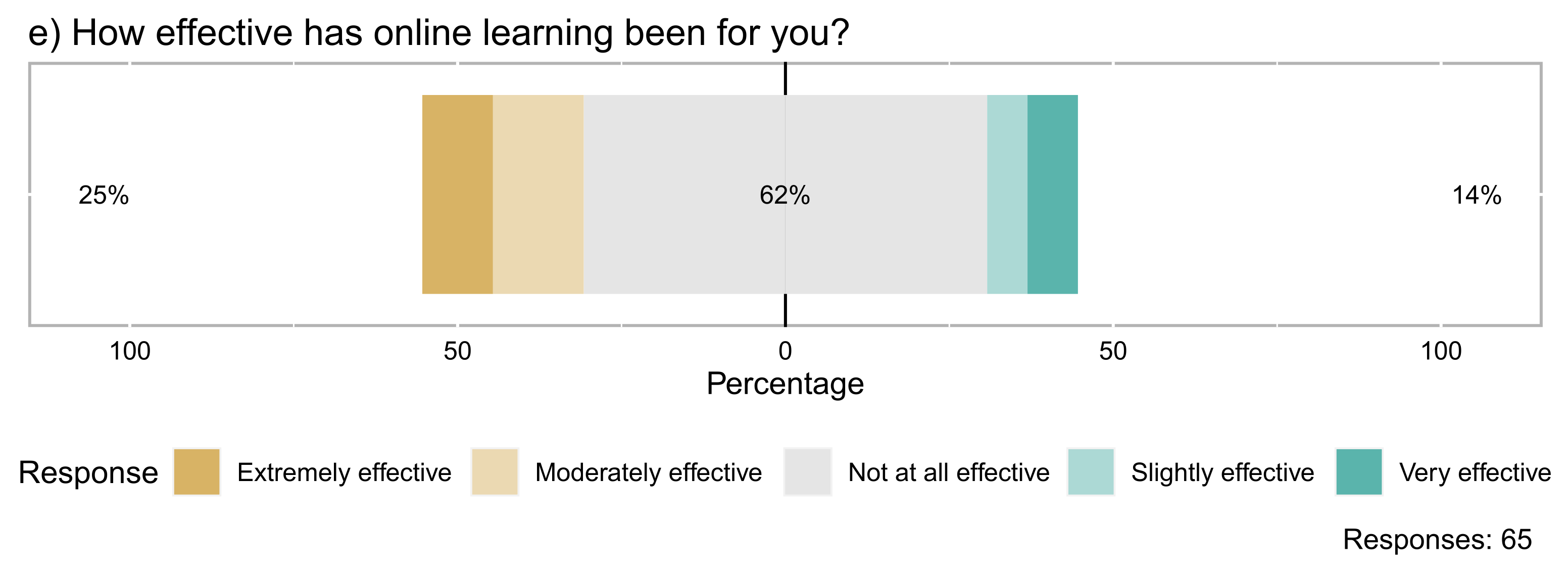




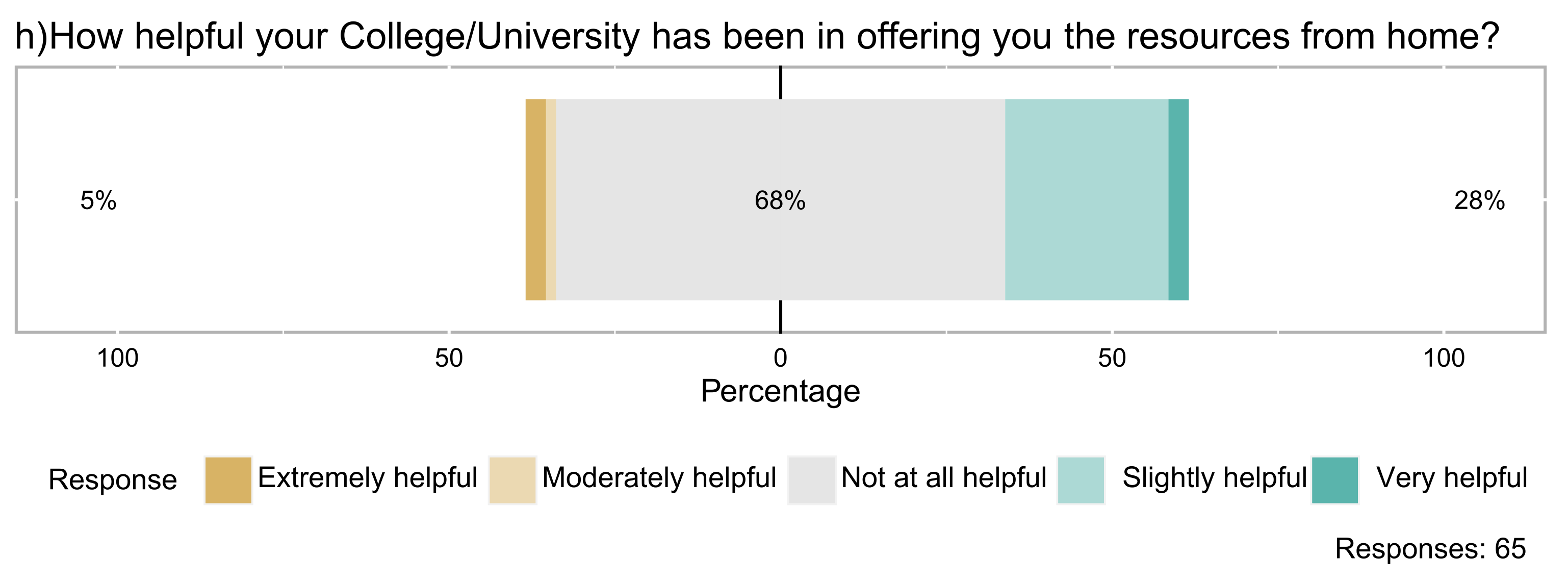
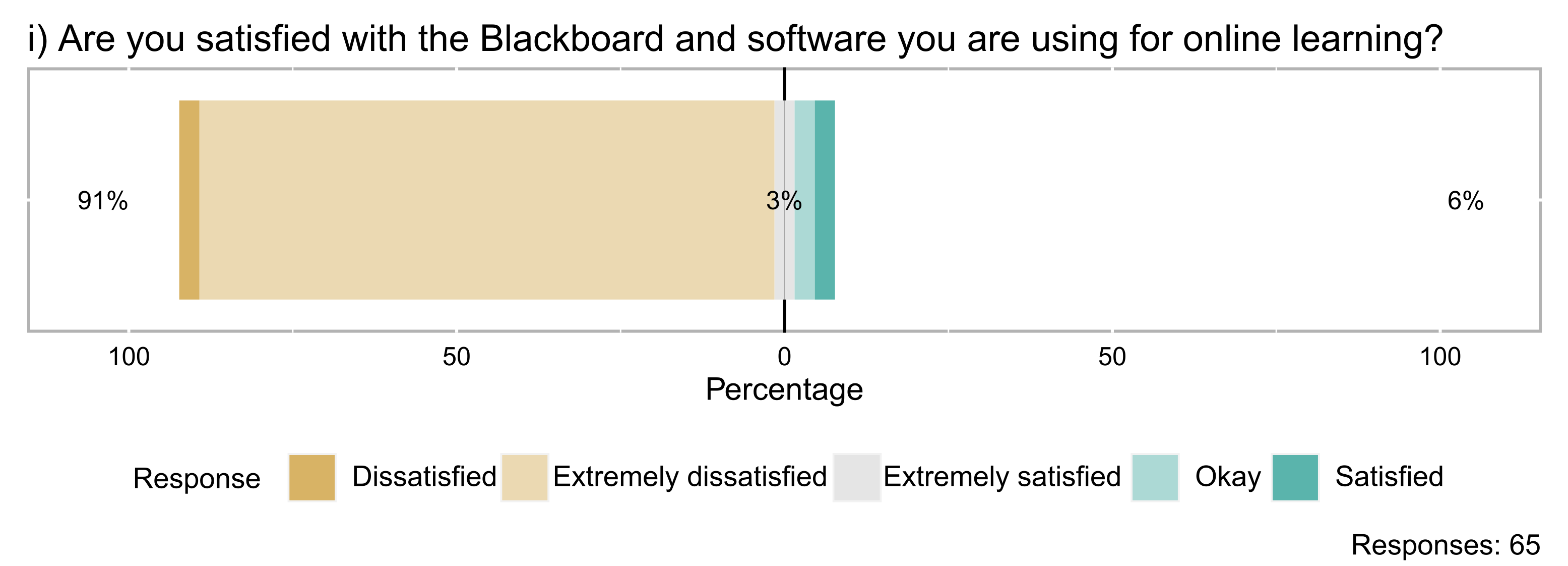

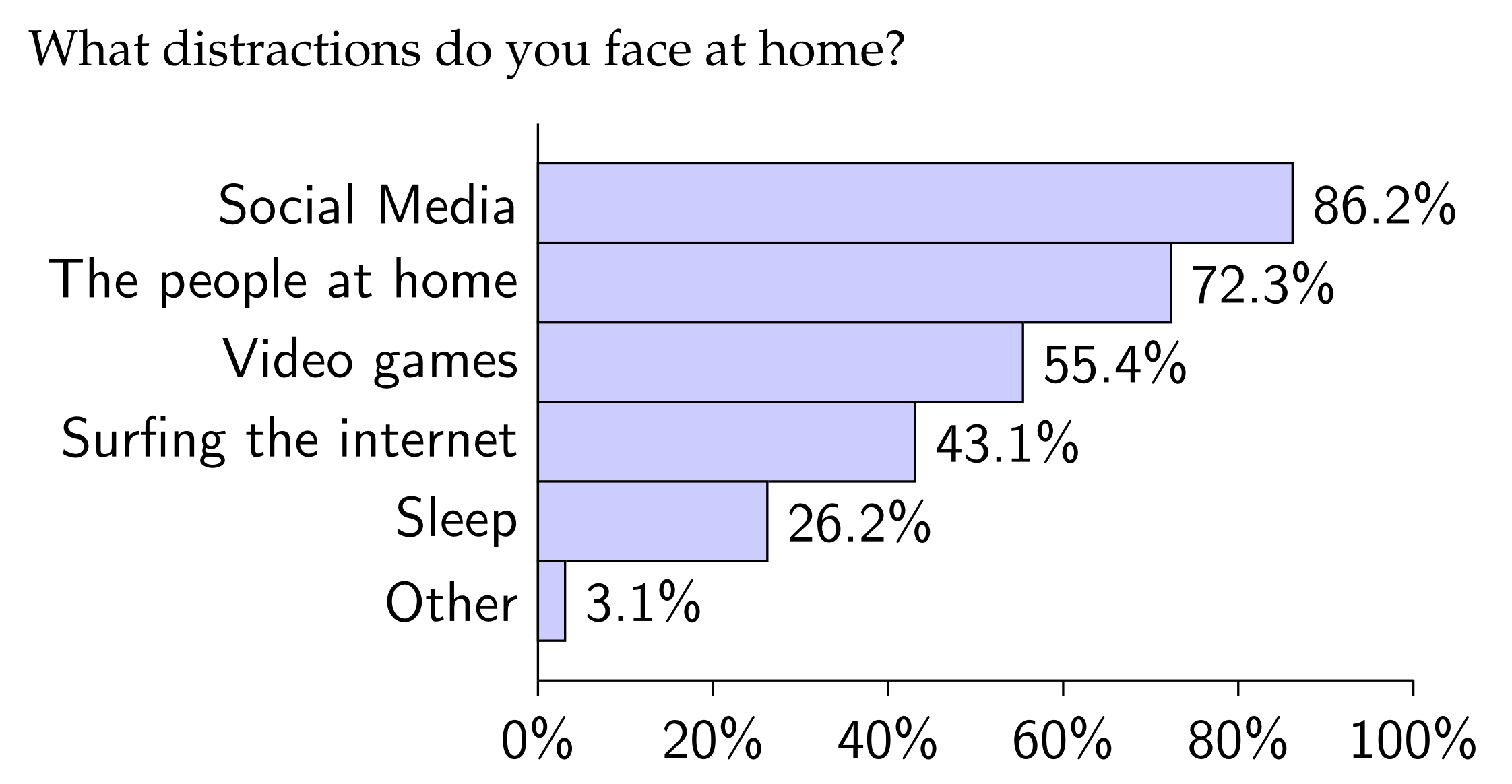

| First Background and Demographics | Fourth Challenges and Concerns |
|---|---|
| Years of age, and study major | What were your distractions while you were learning online? |
| Do you have access to a device for learning online? | What were your most challenges during online learning? |
| What device did you use for online learning? | How was your learning environment at home? |
| SecondGeneric Views | How did you communicate with your teachers? |
| How would you describe your experience in learning online? | Were you able to access the class materials via Blackboard? |
| What type of device did you use for online learning? | How you ever encounter any barriers or issues communicating with your teachers or department? |
| How did you study for the class that needed hardware equipment? | Did all videos have subtitles? |
| Based on your experience in online learning, what do you prefer now? | Do you have a printed text transcript of audio content on the website? |
| ThirdE-learning Tool | FifthStudents recommendations |
| What is your perspective on Blackboard platforms? | What do you feel are the benefits of online courses, such as those provided during COVID-19? |
| Did you use any other e-learning tools? Why? | What are the things that you would like to change in online learning? |
| Did you train on Blackboard? if not, did teachers and department | |
| shared with you resources? |
| Participant | Age | Major | Year | Derive Used | Received Support | Prefer Learning Online |
|---|---|---|---|---|---|---|
| Yes/No | Yes/No | |||||
| P1 | 23 | Computer Technology | 3 | Laptop | Yes | No |
| P2 | 22 | Computer Technology | 2 | Laptop | No | No |
| P3 | 22 | Business | 2 | Laptop | No | No |
| P4 | 21 | Business | 4 | Mobile Phone | No | No |
| P5 | 24 | Business | 1 | Mobile Phone | Yes | No |
| P6 | 20 | Computer Technology | 3 | Desktop Computer | No | Yes |
| P7 | 22 | Business | 3 | Mobile Phone | No | Yes |
| P8 | 23 | Computer Technology | 4 | Desktop Computer | No | No |
Publisher’s Note: MDPI stays neutral with regard to jurisdictional claims in published maps and institutional affiliations. |
© 2021 by the authors. Licensee MDPI, Basel, Switzerland. This article is an open access article distributed under the terms and conditions of the Creative Commons Attribution (CC BY) license (https://creativecommons.org/licenses/by/4.0/).
Share and Cite
Aljedaani, W.; Aljedaani, M.; AlOmar, E.A.; Mkaouer, M.W.; Ludi, S.; Khalaf, Y.B. I Cannot See You—The Perspectives of Deaf Students to Online Learning during COVID-19 Pandemic: Saudi Arabia Case Study. Educ. Sci. 2021, 11, 712. https://doi.org/10.3390/educsci11110712
Aljedaani W, Aljedaani M, AlOmar EA, Mkaouer MW, Ludi S, Khalaf YB. I Cannot See You—The Perspectives of Deaf Students to Online Learning during COVID-19 Pandemic: Saudi Arabia Case Study. Education Sciences. 2021; 11(11):712. https://doi.org/10.3390/educsci11110712
Chicago/Turabian StyleAljedaani, Wajdi, Mona Aljedaani, Eman Abdullah AlOmar, Mohamed Wiem Mkaouer, Stephanie Ludi, and Yousef Bani Khalaf. 2021. "I Cannot See You—The Perspectives of Deaf Students to Online Learning during COVID-19 Pandemic: Saudi Arabia Case Study" Education Sciences 11, no. 11: 712. https://doi.org/10.3390/educsci11110712
APA StyleAljedaani, W., Aljedaani, M., AlOmar, E. A., Mkaouer, M. W., Ludi, S., & Khalaf, Y. B. (2021). I Cannot See You—The Perspectives of Deaf Students to Online Learning during COVID-19 Pandemic: Saudi Arabia Case Study. Education Sciences, 11(11), 712. https://doi.org/10.3390/educsci11110712







